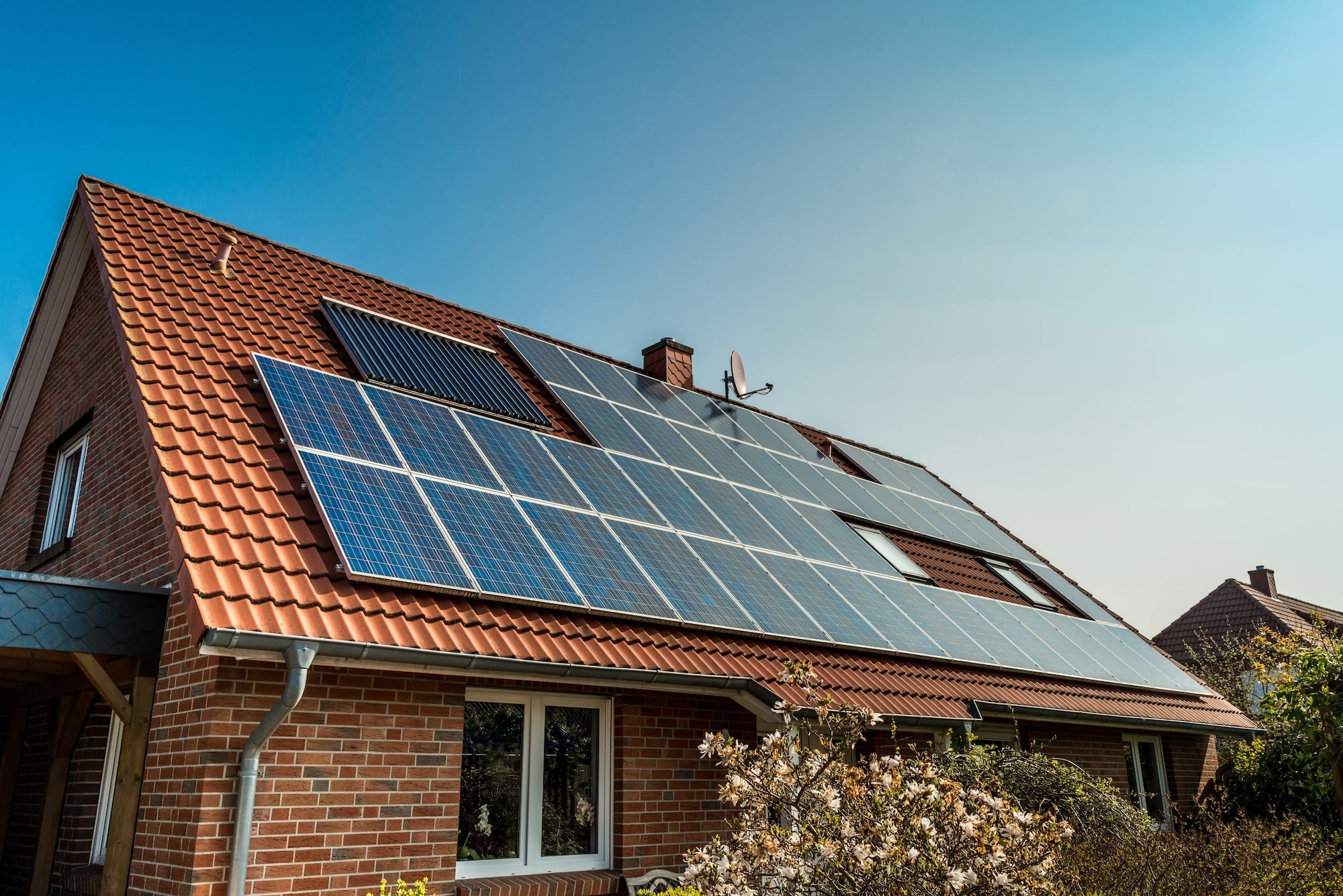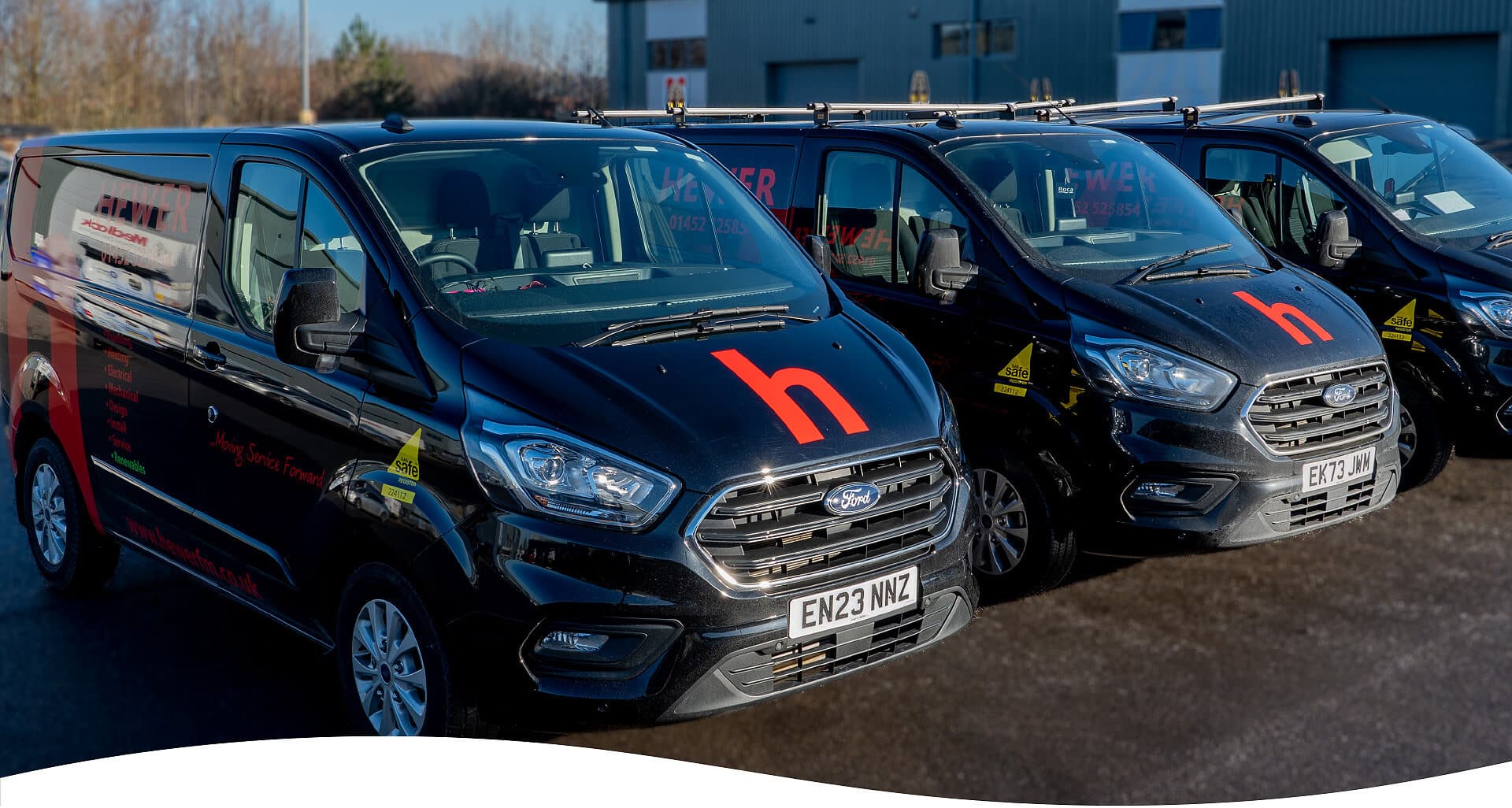Let’s be honest—getting your head around renewable energy tech isn’t always easy. Between acronyms, techy terms, and schemes that change every couple of years, it’s no wonder homeowners feel a bit lost.
That’s why we’ve pulled together this home renewables glossary. It’s not a textbook—just a straightforward guide to the stuff people actually ask us about. Whether you’re looking into solar panels, heat pumps, or smart heating controls, you’ll find clear answers here—with a few Gloucestershire touches thrown in.
At Hewer FM, we’ve spent over 50 years helping people upgrade their homes. This is what we’d want explained if we were starting from scratch.
Solar Energy Terms

Solar PV
These are the classic rooftop panels you see on homes across the South-West. They take light from the sun and turn it into electricity you can use right away. If you’re running the kettle or charging your laptop while the sun’s out, it’s that power you’re using—not the grid’s.
Solar Thermal
This one’s easy to mix up with PV, but it does a different job. Instead of electricity, it uses sunlight to heat water—usually for taps or showers. You’ll often see it paired with a hot water tank, working quietly in the background.
Generation Meter
A small device that tracks how much electricity your panels are producing. It’s mostly there for records—and if you’re on a scheme like SEG, it’s how your payments get calculated. Think of it as your solar scoreboard.
Battery Storage
If your panels make more electricity than you need at the time, a battery saves the spare. That way, when the sun goes down (or the British weather does its thing), you can still run off your own stored energy instead of paying for mains power.
MCS Certification
Short for Microgeneration Certification Scheme. Basically, it’s the quality stamp your installer and equipment need to access most government schemes. Without it, you can’t claim export payments. Hewer FM’s fully MCS-accredited, by the way.
Smart Export Guarantee (SEG)
This lets you earn money for the solar energy you don’t use. It’s not a flat rate—each supplier sets their own price for the power you send back. Some pay well, others less so. We always suggest checking before you commit.
Feed-in Tariff (FIT)
An older scheme that paid people for every unit of solar electricity they generated, even the part they used themselves. It closed to new signups back in 2019, but some households still get monthly payments under it.
Net Metering
A term borrowed from the US that often causes confusion here. It’s where exported energy reduces your bill one-for-one. The UK doesn’t use that system—we’ve got SEG instead, which pays you separately for what you export.
Heat Pump & Heating Terms

Air Source Heat Pump (ASHP)
Instead of burning fuel, this system pulls heat from the outside air—even when it’s chilly—and uses it to warm your home and hot water. It runs on electricity, but because it’s so efficient, it can deliver more heat than the energy it uses.
Ground Source Heat Pump (GSHP)
Same idea as an ASHP, but instead of using air, it pulls warmth from the ground through a loop of buried pipework. It’s very efficient, but the setup takes more space and planning, so it’s usually better for homes with larger outdoor areas.
COP (Coefficient of Performance)
This one gets thrown around a lot. It’s just a measure of efficiency. If your heat pump has a COP of 3, that means for every unit of electricity it uses, it gives you 3 units of heat back. Higher is better.
Hybrid System
A hybrid setup pairs a heat pump with a gas boiler. The heat pump does most of the work, and the boiler steps in when needed—like on freezing days or if you’ve got a high heating demand. It’s a flexible middle-ground.
Thermal Store
Think of this as a big heat battery. It stores warmth from your system (solar or heat pump) so it’s ready when you need it—like early mornings or after the sun’s gone down. It works especially well with setups that generate heat in bursts.
Insulation (Cavity & Loft)
You won’t get far with renewables if your house is leaking heat. Loft and wall insulation keep the warmth in, meaning your heating system doesn’t have to work as hard—or cost as much to run. In older homes, this is often the first upgrade worth making.
Renewable Heat Incentive (RHI)
This was a government scheme that paid homeowners for using renewable heating. It’s not available anymore, but you’ll still come across it in older articles and forum posts. If you’re starting fresh in 2025, it’s the Boiler Upgrade Scheme you want.
Boiler Upgrade Scheme (BUS)
The current government grant that gives you £7,500 off a heat pump installation. It’s available across the South-West, and to get it, you need an MCS-accredited installer—like us. We handle the application process so you don’t have to wrestle with the paperwork.
Smart Home & Efficiency Terms

Smart Thermostat
This is the bit that lets you control your heating from your phone—or lets it learn your routine and do it for you. Brands like Hive and Nest are common. Handy if you’re out all day or don’t want to waste heat warming an empty house.
Zoning
Rather than heating the whole house the same way, zoning splits things into areas you can control separately. Living room warm, bedrooms cooler, that sort of thing. It’s more efficient and often more comfortable too.
EV Charger (Domestic)
If you’ve got an electric car, this is the charger you’d install at home. It’s not renewable in itself, but pairs well with solar panels or off-peak electricity to cut charging costs. Especially useful if you’ve got a driveway and regular mileage.
Battery Storage (Home)
A battery stores any solar energy you didn’t use during the day. Later on—after sunset or on cloudy days—you can run off your own supply. Some homes in Gloucestershire now combine panels and batteries to stay mostly off-grid for big chunks of the year.
Peak and Off-Peak (Economy 7, etc.)
Some tariffs give you cheaper rates at night. If you’re using a heat pump, charging an EV, or running a home battery, it can be worth timing energy use to these off-peak hours. Lots of homes in the South-West already take advantage of this.
Retrofit
This just means upgrading an older home with modern energy-saving tech. Could be anything from insulation and new windows to a full solar-plus-heat-pump setup. Retrofit makes a big difference to energy bills in older stone-built properties we see around Gloucestershire.
Passivhaus / Low Carbon Home
These are homes that are either built or refurbished to be extremely energy-efficient. They hold heat really well and usually rely on renewables to keep them running. Think of it as the gold standard for comfort, low bills, and sustainability.
Off-grid
Homes not connected to mains gas or electricity—common in more rural parts of the Cotswolds and Forest of Dean. In places like these, renewable tech isn’t just greener—it’s often the most practical choice too.
Conclusion

We get it—renewables can feel like a different language at first. Hopefully, this guide helped untangle some of the jargon and made things just a little clearer.
If you’re thinking about solar, heat pumps, or making your home more energy-efficient, our team at Hewer FM is always happy to talk things through—no pressure, just honest advice from people who’ve been doing this for decades.

